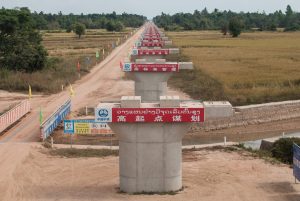Last week, Reuters published a report claiming that due to snowballing debt obligations—much of it owed to Chinese state banks—Laos has been forced to cede majority control of its national power grid to a Chinese company. As per the report, the power grid shareholding deal, signed on September 1 between state-owned utility Électricité du Laos (EDL) and China Southern Power Grid Co., would give majority control of the new Électricité du Laos Transmission Company Limited to the Chinese firm.
Like most of its mainland Southeast Asian neighbors, Laos has been spared the worst of COVID-19. The landlocked nation has recorded just 22 coronavirus cases and no deaths from the virus. But the pandemic has torpedoed the country’s tourism industry and choked off the trickle of remittances from abroad, pushing the communist-led nation to the brink of sovereign default. As of June, the country’s reserves had dwindled to $864 million, insufficient to meet debt obligations totaling more than $1 billion annually until the end of 2024. The last Asian country to default on its sovereign debt was Myanmar in 2002.
Even before COVID-19 hit, many observers had concerns about Laos’ ballooning debt to China. In recent years, the government has invested heavily in hydropower dam projects, many of them backed by China, hoping to transform Laos into the “The Battery of Southeast Asia.” According to a separate report in the Financial Times, in addition to Laos’s own sovereign debt of $12.6 billion (equivalent to around 65 percent of gross domestic product), EDL holds an estimated $8 billion of debt.
The government’s debt has been pumped up further by the cost of the Chinese high-speed railway that is currently boring and bridging its way from the Lao capital Vientiane to the Chinese border, where it will link up with China’s high-speed rail network. The daunting engineering challenges posed by Laos’ mountainous terrain—the 417-kilometer rail line will include 198 kilometers of tunnels and 61 kilometers of bridges—have done much to contribute to the project’s eye-popping $6.2 billion price tag, an amount equivalent to around $15 million per kilometer.
These various projects have made China Laos’s biggest creditor. In a 2018 report, the Washington-based Center for Global Development concluded that Laos was the one Southeast Asian country risking significant debt distress as a result of Belt and Road Initiative (BRI) loans from China. A study published in 2019 by the Sydney-based Lowy Institute estimated Laos’ debt to China at 45 percent of Laos’ GDP.
Both Reuters and the Financial Times report that Laos is in talks with Beijing about postponing part of Laos’ total debt service payments. While Laos could be eligible for help by the International Monetary Fund under its COVID-19 Financial Assistance and Debt Service Relief program, the government has stated that it would rather try to find a solution with China, hoping to avoid the financial transparency requirements that would be attached to any IMF relief.
Even before this crisis, China was deeply entrenched in Laos, particularly in its northern provinces, where new infrastructure links with China’s Yunnan province have opened the region to a transformative flow of Chinese immigration and investment. The rising Chinese investment has slowly pulled Laos out of the orbit of Vietnam, its traditional ally and patron.
Coming after many years of rising Chinese influence, the Chinese power grid deal will bind the small nation of 7 million ever closer to its giant neighbor. It is also sure to fuel claims that China is employing “debt-trap diplomacy” to gain strategic advantage in countries overburdened with BRI infrastructure loans. While I have argued before that the idea of “debt-trap diplomacy”—the purposeful use by Beijing of debt to ensnare small developing nations—has been much exaggerated, Laos’ quandary is a reminder that debt nonetheless poses significant risks to small nations. In time, every bill comes due.

































